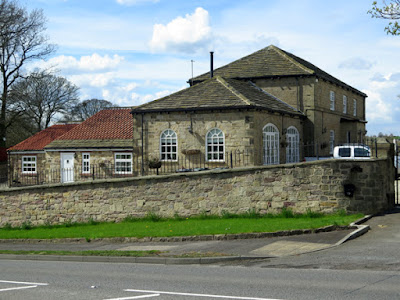 |
| A view up Holmes Lane |
On Holmes Lane in Hooton Roberts, although I did not have a compass clinometer to measure the actual dip of the small outcrops of rock on either side, my observations seemed to suggest that it is in the opposite direction to that seen in the strata to the south of the River Don - from Rotherham to Denaby - which are affected by the Don Monocline.
 |
| A general view of Hooton Roberts |
My old paper BGS map marks a fault just to the north-west of this outcrop, with a downthrow in this direction, and it has made me wonder if the map is actually correct; however, without investigating this further, I
continued
my investigation of the “Hooton Roberts Rock” by surveying some
of the old buildings that can be found in this village.
 |
| The Earl of Strafford |
The
Earl of Strafford public house, built around the turn of the 17th
century and considerably enlarged in the later part of the 18th century, is the oldest listed building in Hooton Roberts – apart
from St. John the Baptist's church – and its walls are built out of
“Rotherham Red” sandstone, with the quoins and dressings made
from a buff/brown variety of sandstone.
 |
| Sandstone dressings at the Earl of Strafford public house |
When
undertaking a survey of the geological
sites in
Rotherham for the South Yorkshire RIGS Group, back in 1989, I very
briefly visited the Hooton Quarry, which is excavated into a
buff/brown variety of Mexborough Rock – 1
km to the west of the village – and this
is very likely to be
the source of these dressings.
Many
of the
agricultural and vernacular buildings of a later date
are wholly built using this stone but several others use this
together with
“Rotherham
Red” sandstone, and
it also appears in some of the boundary walls that run alongside the
main road.
 |
| Boundary walling in Hooton Roberts |
No
evidence of old
quarry faces has yet been
seen in
the village, which would show the extent of the colouration of
the rock here,
but
the abundance of red sandstone - and the need to reduce the cost of transport for stone used for simple vernacular architecture - would suggest
that the deep blood red stone used to build houses next St. John the Baptist's church was quarried nearby.
 |
| Vernacular architecture in Hooton Roberts |







No comments:
Post a Comment